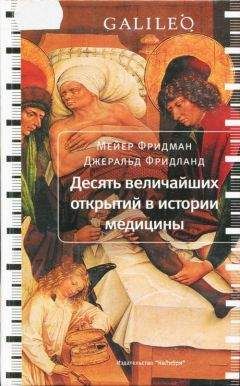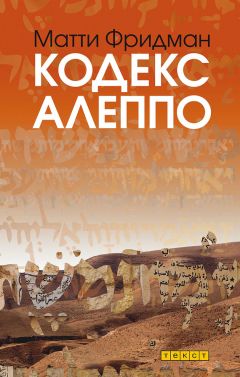Ричард Фридман - Как создавалась Библия
Lundbom, Jack R. “The Lawbook of the Josianic Reform.” Catholic Biblical Quarterly 38 (1976): 293–302.
Malamat, Abraham. “The Twilight of Judah: In the Egyptian-Babylonian Maelstrom.” Vetus Testamentum Supplements 28 (1975): 123–145.
_ “Origins and the Formative Period.” In H. H. Ben-Sasson, A History of the Jewish People, pp. 3-87. Cambridge, Mass.: Harvard University Press, 1976.
May, Herbert, ed. Oxford Bible Atlas, 3rd ed. New York: Oxford, 1981.
McBride, Samuel Dean. “The Deuteronomic Name Theology.” Dissertation, Harvard University, 1969.
McCarthy, D. J. Old Testament Covenant. Richmond: John Knox, 1972.
_ Treaty and Covenant. Rome: Pontifical Biblical Institute, 1963.
McEvenue, Sean. The Narrative Style of the Priestly Writer. Rome: Pontifical Biblical Institute, 1971.
McKenzie, Steven L. The Chroniclers Use of the Deuteronomistic History. Harvard Semitic Monographs. Decatur, Ga.: Scholars Press, 1984.
Mendenhall, G. E. Law and Covenant in Israel and the Ancient Near East. Pittsburgh: Biblical Colloquium, 1955.
Milgrom, Jacob. Cult and Conscience. Leiden: Brill, 1976.
_ Studies in Levitical Terminology, I. Berkeley: University of California Press, 1970.
Moran, W. L. “The Literary Connection Between Lev 11:13–19 and Deut 14:12–28.” Catholic Biblical Quarterly 28 (1966): 271–277.
Mowinckel, S. Erwagungen zur Pentateuch Quellenfrage. Trondheim: Universitetsforlaget, 1964.
Myers, Jacob М. Ezra/Nehemiah, The Anchor Bible. Garden City, N.Y.: Doubleday, 1965.
Nelson, Richard. The Double Redaction of the Deuteronomistic History. JSOT Supplement Series. Sheffield, 1981.
Nicholson, E.W. Deuteronomy and Tradition. Philadelphia: Fortress, 1967.
_ Preaching to the Exiles. Oxford: Blackwell, 1970.
Noth, Martin. Exodus. Philadelphia: Westminster, 1962.
_ A History of Pentateuchal Traditions. Englewood Cliffs, N.J.: Prentice-Hall, 1972. German edition, 1948.
_ The History of Israel. New York: Harper and Row, 1960. German edition, 1958.
_ The Laws in the Pentateuch. Edinburgh: Oliver and Boyd, 1966.
_ Leviticus. Philadelphia: Westminster, 1965.
_ Numbers. Philadelphia: Westminster, 1968.
_ The Old Testament World. Philadelphia: Fortress, 1966. German edition, 1964.
_ Uberlieferungsgeschichtliche Studien. Tubingen: Max Niemeyer Verlag, 1957. Original edition, 1943. Pp. 1-110 in English translation as The Deuteronomistic History. JSOT Supplement Series. Sheffield, 1981.
Perdue, L.G., and Kovacs, B.W., eds. A Prophet to the Nations: Essays in Jeremiah Studies. Winona Lake, Ind.: Eisenbrauns, 1984.
Polzin, Robert, Late Biblical Hebrew: Toward an Historical Typology of Biblical Hebrew Prose. Decatur, Ga.: Scholars Press, 1976.
Pritchard, James B., ed. Ancient Near Eastern Texts Relating to the Old Testament, 3rd ed. Princeton, 1969.
Propp, William H. “The Skin of Moses 5 Face — Transfigured or Disfigured?” Catholic Biblical Quarterly, 1987. von Rad, Gerhard. Deuteronomy: A Commentary. London: SCM, 1966.
_ Genesis. Philadelphia: Westminster, 1961.
_ Der Priesterschrift im Hexateuch (Berlin: W. Kohlhammer, 1934).
_ The Problem of the Hexateuch. New York: McGraw-Hill, 1966.
Rendsburg, G. “Late Biblical Hebrew and the Date of P.” Journal of the Ancient Near East Society 12 (1980): 65–80.
Rendtorff, Rolf. Das iiberlieferungsgeschichtliche Problem des Pentateuch (Beihefte zur Zeitschrift fur die alttestamentiche Wissen-schaft 147. Berlin/New York: Walter de Gruyter, 1977.
Rogerson, John. Old Testament Criticism in the Nineteenth Century: England and Germany. London: SPCK, 1984.
Rowley, H. H. The Old Testament and Modern Study. New York: Oxford, 1951.
Sarna, Nahum. “Hebrew and Bible Studies in Medieval Spain.” The Sephardic Heritage, vol. 1. London: Vallentine, Mitchell, 1971.
van Seters, J. Abraham in History and Tradition. New Haven: Yale University Press, 1975.
Shiloh, Yigal. Excavations at the City of David, vol. 1. Jerusalem: Institute of Archeology, Hebrew University, 1984.
Speiser, E.A. Genesis, The Anchor Bible. Garden City, N.Y.: Doubleday, 1964.
Spinoza, Benedict. Tractatus theologico-politicus. 1670.
Tadmor, Hayim. “The Period of the First Temple, the Babylonian Exile and the Restoration.” In H. H. Ben-Sasson, A History of the Jewish People, pp. 91-182. Cambridge, Mass.: Harvard University Press, 1976.
Thompson, R. J. Moses and the Law in a Century of Criticism Since Graf Vetus Testamentum Supplements 19. Leiden: Brill, 1970.
Tsevat, Matitiahu. “Studies in the Book of Samuel, III.” Hebrew Union College Annual 34 (1963): 71–82.
de Vaux, Roland. Ancient Israel. New York: McGraw-Hill, 1961.
Weinfeld, Moshe. “The Covenant of Grant in the Old Testament and in the Ancient Near East.” Journal of the American Oriental Society 90 (1970): 184–203.
_ Deuteronomy and the Deuteronomic School. New York: Oxford University Press, 1972.
_ “Getting at the Roots of Wellhausen’s Understanding of the Law of Israel on the 100th Anniversary of the Prolegomena. " Report No. 14/79. Jerusalem: Institute for Advanced Studies, Hebrew University, 1979.
_ “Jeremiah and the Spiritual Metamorphosis of Israel.”
Zeitschrift fur die alttestamentliche Wissenschaft 88 (1976): 17–56.
Wellhausen, Julius. Prolegomena zur Geschichte Israels. Edinburgh, 1885. Reprinted, Gloucester, Mass., Peter Smith, 1973. German edition, 1883.
de Wette, W. M. L. Dissertatio critica qua a prioribus Deuteronomium Pentateuchi libris diversam, alius cuiusdam recentioris auctoris opus esse monstratur. 1805. Reprinted in Opuscula Theologica. Berlin, 1830.
Williamson, H. G. M. Israel in the Books of Chronicles. Cambridge University Press, 1977.
Wolff, Hans Walter. “Das Kerygma des deuteronomistischen Geschichtswerks.” Zeitschrift fur die alttestamentliche Wissenschaft 73 (1961): 171–186.
Wright, George Ernest, ed. The Bible and the Ancient Near East. Garden City: N.Y.: Doubleday, 1961.
_ Biblical Archeology. Philadelphia: Westminster Press, 1962.
_, The Book of Deuteronomy, The Interpreters Bible, 11:311–537. New York: Abingdon, 1953.
_, and Fuller, R. H. The Book of the Acts of God. Garden City, N.Y.: Doubleday, 1957.
_ “The Lawsuit of God: A Form-Critical Study of Deuteronomy 32.” In B. Anderson and W. Harrelson, eds., Israel's Prophetic Heritage. New York: Harper, 1962.
_ The Old Testament Against Its Environment. London: SCM, 1950.
Zevit, Ziony. “Converging Lines of Evidence Bearing on the Date of P.” Zeitschrift fut die alttestamentliche Wissenschraft 94 (1982): 502–509.
_, “The Priestly Redaction and Interpretation of the Plague Narrative in Exodus.” Jewish Quarterly Review 66 (1976): 193–211.
От автора
Моим исследованиям для этой книги способствовала финансовая поддержка Американского совета научных обществ, гранты от Национального гуманитарного фонда. Я благодарен им за помощь.
Часть исследований по данному проекту я провел в Оксфорде, где работал в Оксфордском центре гебраистики. Я благодарен за любезную помощь, которая постоянно оказывалась мне во время этой работы президентом Дэвидом Паттерсоном, а также сотрудниками центра, особенно мисс Салли Аркли.
Я также признателен Калифорнийскому университету (Сан-Диего) за гранты, способствовавшие исследованиям.
Мой интерес к данной проблематике зародился во время моей учебы в Гарвардском университете, на факультетах Ветхого Завета и Ближневосточных языков и цивилизаций. Минувшие годы не уменьшили огромное чувство признательности, которое я испытываю к своим учителям, начиная с благословенной памяти Дж. Эрнеста Райта, а также к Франку Муру Кроссу, Томасу Ламбдину, Уильяму Морану, Торкильду Якобсену и Полу Хэнсону. Особенно признателен профессору Кроссу, который был моим научным руководителем. Он и поныне остается для меня образцом ученого. Профессор Кросс сделал мне столько добра, что я и не могу надеяться за него отплатить.
Я благодарен замечательному археологу, профессору Нахману Авигаду из Еврейского университета в Иерусалиме за любезно предоставленную фотографию буллы Баруха бен Нерии. Эту фотографию я включил в свою книгу.
Одной из величайших удач своей жизни я считаю знакомство с профессором Дэвидом Ноелом Фридманом. Он сделал для меня много хорошего («хесед») и научил многому как личным примером, так и советом. Я питаю огромное уважение к этому человеку и его знаниям.
Моя признательность Баруху Хальперну должна быть понятна из упоминаний о нем в этой книге. Среди ученых моего поколения я никого не уважаю больше, чем его. На мой взгляд, те его изыскания, о которых я упоминаю здесь, исключительно важны для библеистики. В плане исторического метода я также почерпнул у него больше, чем у кого-либо еще.
Уильям Пропп, мой коллега по Калифорнийскому университету, — идеальный коллега. Это глубокий, независимый, тонкий и незаурядный исследователь, дружелюбному отношению которого я очень рад. Я признателен ему за комментарии и критику, которые помогли сделать книгу лучше.
Одной из приятных неожиданностей по ходу написания книги было знакомство с Джоан Эллисон Роджерс, которая помогла мне улучшить литературный стиль, поддерживала и подбадривала меня, и стала моим другом.
Как было сказано в Предисловии, некоторое время назад я решил, что попытаюсь донести результаты своих изысканий не только до научного мира, но и до широкой публики. Мой литературный агент, Элен Марксон, верила в эту книгу и в ее цели. Ее профессионализм в сочетании с глубокой доброжелательностью вызывают у меня уважение и искреннее восхищение.
Артур Сэмюэлсон, редактор этой книги из издательства «Харпер и Роу», — редактор в традиции девтерономиста. Читатели этой книги знают, что это высокая похвала. Я уважаю его как профессионала и благодарен ему как человеку.
Ричард Эллиот Фридман, декабре 1986 года
Примечания
1
"Some Recent Non-Arguments Concerning the Documentary Hypothesis," in Michael Fox et al., eds., Texts, Temples, and Traditions, Menahem Haran Festschrift (Winona Lake, IN: Eisenbrauns, 1996), 87 — 101
2
Библейские цитаты в русском тексте далее обычно даются по Синодальному переводу. В отдельных местах в перевод внесены изменения, отражающие понимание текста Р. Фридманом. Также транскрипция ряда имен и названий приближена к их еврейскому звучанию. Грецизированная транскрипция сохранена преимущественно в тех случаях, когда она прочно прижилась в русской культуре (например, Самуил, Иосиф). — Прим. пер.
3


